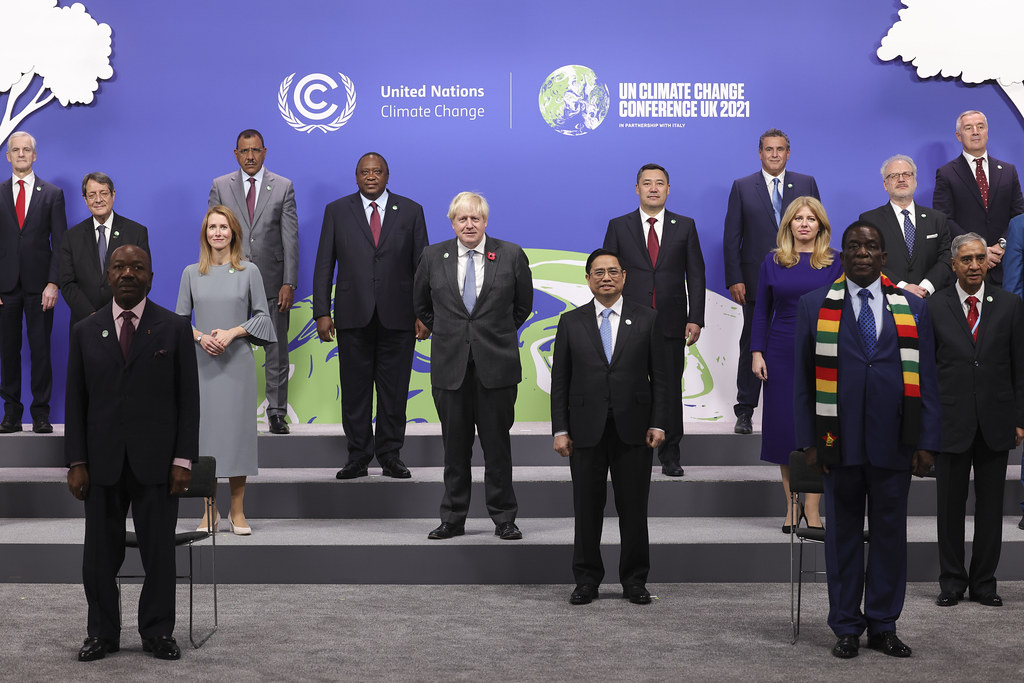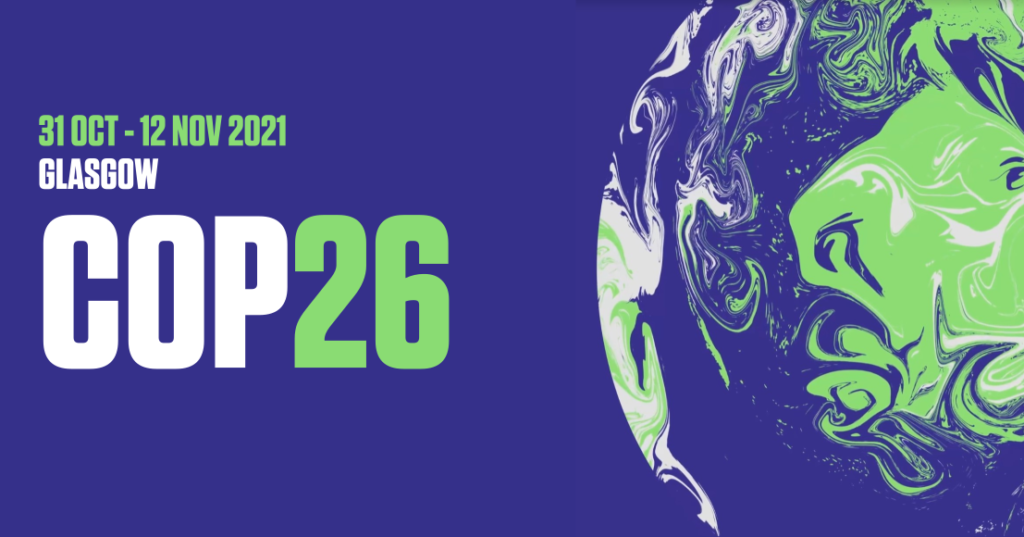COP26 was the 26th Conference of the Parties to the United Nations Framework Convention on Climate Change (UNFCCC) and was held in Glasgow, Scotland, from October 31 to 12 November 2021. The conference brought together world leaders, climate experts and campaigners to agree on a plan of action to tackle climate change.
Conference of the Parties
The Conference of the Parties is the supreme decision-making body of the United Nations Framework Convention on Climate Change. The Parties to the Convention meet annually at a Conference of the Parties (COP) to assess progress in dealing with climate change, and take decisions necessary to promote the effective implementation of the Convention, including adopting Protocols or other legal instruments.
The COP adopts decisions (known as “COP decisions”) which provide guidance to Parties on implementing the UNFCCC. The COP also periodically reviews and updates the Kyoto Protocol, which is an international agreement that sets binding targets for developed countries to reduce their greenhouse gas emissions.
The first COP was held in Berlin in 1995. The COP is guided by the principles of transparency, equity, common but differentiated responsibilities and respective capabilities, and takes into account different national circumstances.
United Nations Framework Convention on Climate Change

The United Nations Framework Convention on Climate Change (UNFCCC) is an international environmental treaty negotiated at the Earth Summit in 1992 and entered into force on 21 March 1994. The UNFCCC secretariat is headquartered in Bonn, Germany.
The ultimate objective of the UNFCCC is to stabilize greenhouse gas concentrations in the atmosphere at a level that would prevent dangerous human interference with the climate system.
Kyoto Protocol
The Kyoto Protocol is an international agreement that sets binding targets for developed countries to reduce their greenhouse gas emissions. The Protocol was adopted at the third Conference of the Parties to the UNFCCC in Kyoto, Japan, in December 1997 and entered into force on 16 February 2005.
The Kyoto Protocol was designed as a first step towards achieving the ultimate objective of the UNFCCC, which is to stabilize greenhouse gas concentrations in the atmosphere at a level that would prevent dangerous human interference with the climate system. The Protocol’s first commitment period started in 2008 and ended in 2012. A second commitment period began on 1 January 2013 and will run until 2020. The Kyoto Protocol has been ratified by 192 Parties.
The Protocol’s flexible mechanisms are:
Clean Development Mechanism
The Clean Development Mechanism (CDM) allows developed countries to invest in clean development projects in developing countries and receive carbon credits that can be used to offset their emissions. The Protocol’s Clean Development Mechanism has been particularly successful, with more than 2,000 projects registered worldwide and over 1 billion Certified Emission Reductions issued.
Joint Implementation
The Joint Implementation allows developed countries to cooperate in emission-reduction projects in other developed countries. The Protocol’s Joint Implementation has also been successful, with over 400 projects registered and more than 200 million Emission Reduction Units issued.
Kyoto Protocol International Emissions Trading System
The International Emissions Trading System creates a market for trading emission allowances, also know as a carbon market.
Carbon Markets
Carbon markets are mechanisms that allow trading in units of carbon dioxide emissions. The most common type of carbon market is an emissions trading system, which is a market-based approach to controlling pollution by providing economic incentives for achieving reductions in the emissions of pollutants. Emissions units, carbon credits, or carbon offsets are all tradable commodities in carbon markets.
Paris Agreement
COP26 was a critical moment in the fight against climate change. The Paris Agreement, which was agreed at COP21 in 2015, set the goal of keeping global temperature rise this century well below 2 degrees Celsius. But since then, emissions have continued to rise, meaning that more needs to be done to reduce greenhouse gas emissions and prevent dangerous levels of climate change.
Outcomes of COP26

There were a number of important outcomes of COP26, including:
- An agreement to strengthen the global response to climate change
- A commitment to provide financial support to developing countries to help them reduce emissions and adapt to the impacts of climate change
- A new target to reach net zero emissions by 2050
- A plan to review progress every five years
- A commitment to transparency in reporting emissions and progress towards climate goals.
Global Response to Climate Change
The global response to climate change needs to be strengthened in order to meet the goals of the Paris Agreement. This will require all countries to take ambitious action to reduce emissions and help build resilience to the impacts of climate change.
Developing Countries
Developing countries need financial support to help them reduce emissions and adapt to the impacts of climate change. COP26 saw a commitment from developed countries to provide this support, which is essential for ensuring that the goals of the Paris Agreement are met.
Net Zero Emissions by 2050
One of the most important outcomes of COP26 was a commitment by developed countries to reach net zero emissions by 2050. This means that, over the next 30 years, developed countries will need to reduce their emissions to offset any remaining emissions through measures such as planting trees or capturing and storing carbon dioxide.
The target date of 2050 is significant because it is the date by which scientists say we need to achieve net zero emissions in order to prevent dangerous levels of climate change. Achieving net zero emissions by 2050 will require a dramatic transformation of the global economy, and it will not be easy. But it is essential if we are to avoid the most catastrophic impacts of climate change.
Emissions Reporting
In order to hold countries accountable for their climate goals, it is essential that there is transparency in reporting emissions and progress towards those goals. COP26 saw a commitment from all countries to increase transparency in reporting, which will help ensure that the goals of the Paris Agreement are met.

